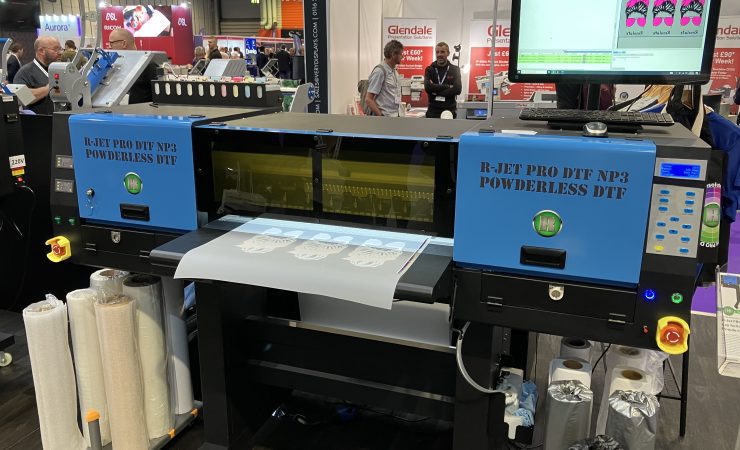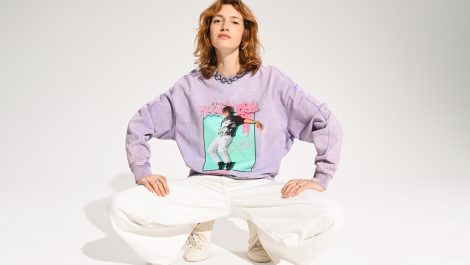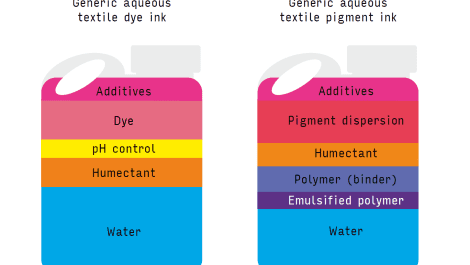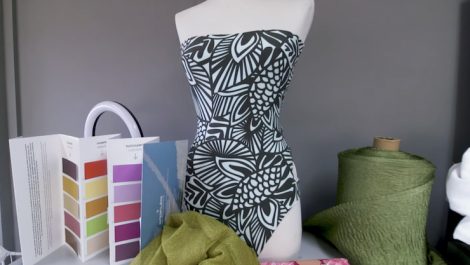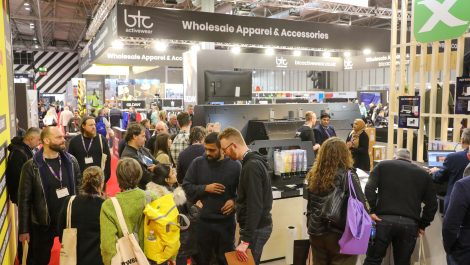The pace of development and product introduction and upgrade in direct-to-film (DtF) shows no sign of slackening. Here’s a snapshot of the current state of play in this rapidly-evolving sector.
If a week is a long time in politics, a bit over five months in DtF feels like an age. Since our first printed incarnation of Digital Textile Printer in the May/June issue of Digital Printer, a flood of direct-to-film announcements has washed over us.
Fespa in Munich in late May saw Ricoh preview two new DtF machines, which were officially named and confirmed in late September. The Ricoh Pro DTF 10 and Pro DTF 8 are fully automated, roll-fed systems that combine water-based piezo inkjet printing with integrated inline hotmelt adhesive and heating. The Pro DTF 8 has eight ink channels, whilst the Pro DTF 10 has expanded colour gamut capabilities with 10 ink channels including neon pink, neon red, neon yellow and neon green. Both are Eco Passport certified.
Both are powered by ColorGate’s Productionserver and also enjoy Ricoh’s end-to-end support that includes tailored software, accurate colour profiling, approved consumables and post-production processing.
Ricoh claims ‘excellent’ results at high process speeds for the machines, plus the elimination of pre-treatment for textiles and substrates, a large selection of optimally matched consumables and an automatic cleaning function that simplifies maintenance.
Brother, which already has a presence in industrial-grade direct-to-garment (DtG) print, was also at Fespa, where it introduced a roll-to-roll DtF printer, based on the GTX Pro DtG model, adding a dedicated roll feeder attachment and an automated inline powder/dryer unit. It is available across EMEA now and is expected in Asia and the US from January 2024. The printer is priced at €32,985, which includes the powder unit.
Having only introduced its TxF150-75 DtF printer at the beginning of 2023, Mimaki hasn’t hung about in adding the TxF300-75, which goes three times as fast, at 7.5sqm/hr, equivalent to 66 large T-shirt transfers in 720 x 720dpi six-pass production mode. See page 4 for more on this.
Another printer that has progressed since the early months of 2023 is Roland’s desktop VersaStudio BN-20D, whose SP-G ink and S-powder adhesive have recently acquired Oeko-Tex Eco Passport certification, albeit a few month later than originally envisaged, but guaranteeing the safety of textile products decorated with them. The BN-20D can handle cotton, polyester, cotton-polyester, denim, nylon, rayon and other materials.
Meanwhile, Croatian printer manufacturer Azonprinter introduced a 60cm DtF printer that adds four ‘neon’ colours to the CMYK-plus-white mix, for printing extended gamut images and bold solid colours, all in a ‘maintenance-free’ design.
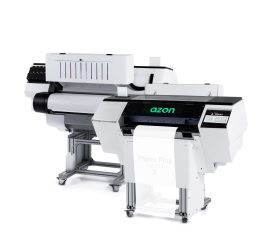
Azonprinter offers ‘neon’ CMYK and extra colours in its Primo Neon X model
Azon offers a range of UV printers in both desktop and industrial configurations, which are complemented now by DtF models, also in desktop (A3 sheet) and 24-in (60cm) industrial forms. The desktop Pronto line offers standard CMYK plus white inks, or is available in a Neon configuration, in which the yellow and magenta inks are replaced by their neon counterparts, while the Primo floor-standing can combine all of these, plus neon orange and neon green, in the Primo + Neon X version. All the inks are Oeko-Tex certified.
A recent arrival that also offers fluorescent inks is a third model from Sabur, which launched its own range in February 2023. Joining the two- and four-head machines, the new SD-70- 3 is a three-head model that adds fluorescent red and yellow to the ink set, allowing for gamut expansion both in solid colours and by mixing with the other process colours. Sabur offers the SD70-3 an all-in-one inline solution, including a 60cm wide printer and coating system, for £19,995.
Showing up
Another more recent platform for product introductions in the UK was The Print Show in September. InkTec showed two new UV DtF machines at the event, in 30 and 60cm widths, driven by the SAi Rip. UV DtF produces ‘stickers’ or decals on transparent film that can be manually applied to hard surfaces, so are more suited to promotional items. The potential for uncured UV inks to irritate skin means this technology isn’t suitable for garment decoration, but may yet have other textile applications, similar to the way that flexible UV inks for wide-format roll printers have been developed.
DtF stalwart Resolute DTF launched the latest iteration of its R-Jet Pro line, the Multi-Function V series of 60cm printers. The R-Jet Pro DTF V4i handles DtF thermal transfer media plus automated powder application and curing but can also print onto aqueous vinyls, self-adhesive and other large format media to produce items such as posters and labels, potentially combining two different print types into one unit. It uses DuPont Artistri inks which have Oeko-Tex, GOTS and HAPS (non-hazardous air pollutants) certifications.
Also shown was a powderless system, the R-Jet Pro DTF NP3, a third-generation device that uses a water-based and Oeko-Tex approved clear adhesive that is jetted onto the transfer media via a dedicated printhead after the CMYK and white inks. This yields a very soft feel and good stretchability in the transferred material on the finished garment, as well as saving the space and cost associated of the powder shaker and curing unit. The dried film is stable and can be rolled and stored for subsequent transfer.
DTF-Printers, part of 1ClickPrint, showed a pair of printers that it hopes will set a new price point for entry into this burgeoning market, with a 42cm unit plus powder shaker for £7495, and a 60cm device with shaker unit for just under £10,000. CMYK plus white inks are supported in both printers.
Both machines use two Epson I3200 printheads; the 42cm width unit is capable of up to 12sqm/hr, while the 60cm model can hit 15sqm/hr, and the company says that they are based on industrial strength print chassis with industry-standard parts for easy replacement, backed by UK-based support.

